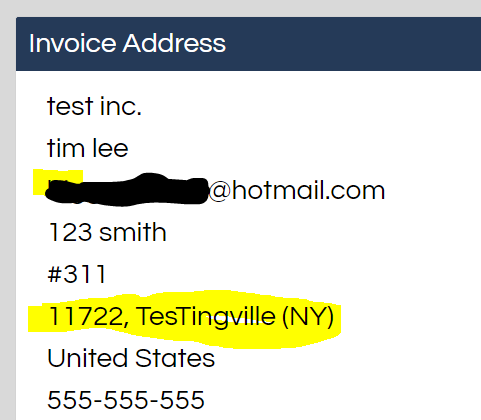
#Whats an invoice address registration#
Tax or company registration details of the seller, if relevant, e.g.Name and contact details of the seller.Tax amounts, if relevant (e.g., GST or VAT).A unique reference number (in case of correspondence about the invoice).Invoices appear as one of the very earliest manifestations of written records in ancient Mesopotamia. Within the European Union, an invoice is primarily legally defined by the EU VAT directive as an accounting voucher (to verify tax and VAT reporting) and secondly as a Civil law (common law) document.Īn invoice should not be mixed up with Proforma Invoice that indicates commitment, intention, or prepayment request. The document indicates the buyer and seller, but the term invoice indicates money is owed or owing. From a buyer's point of view, an invoice is a purchase invoice. To avoid confusion and consequent unnecessary communications from buyer to seller, some sellers clearly state in large and capital letters on an invoice whether it has already been paid.įrom a seller's point of view, an invoice is a sales invoice. The buyer could have already paid for the products or services listed on the invoice. These may specify that the buyer has a maximum number of days to pay and is sometimes offered a discount if paid before the due date. Payment terms are usually stated on the invoice. INNER JOIN AddressType aty ON aty.AddressTypeId = cal.For the Japanese company, see Invoice (company).Īn invoice, bill or tab is a commercial document issued by a seller to a buyer relating to a sale transaction and indicating the products, quantities, and agreed-upon prices for products or services the seller had provided the buyer. INNER JOIN Address a ON a.AddressId = cal.AddressId

business, postal, residential etc)Įasy to query all the address belonging to an entity and can also filter by address type easilyįor example SELECT cal.ClientId, aty.Type, a.Unit, a.Building, a.Complex, a.Street, a.Suburb, a.City, a.Postcode, a.Country No duplicate address records when an address is both a delivery and invoice addressĮasily add more address types if needed in the future (e.g. This will provide you the following benefits: The database might look something like this then: Finally, you have a linking table which stores (a) the ID of the Address record, (b) the ID of the AddressType and (c) the ID of the entity (e.g. You then create an AddressType table which stores the different types of addresses. This led to lots of issues later on and address formats become very inconsistent over time so I would discourage storing addresses in multiple tables.Ī neater solution that you could implement (which is what we are using and it's working well) is creating an Address table that just stores addresses (without the type). Initially the address details were stored in different tables.

We had a similar problem with regards to addresses.


 0 kommentar(er)
0 kommentar(er)
